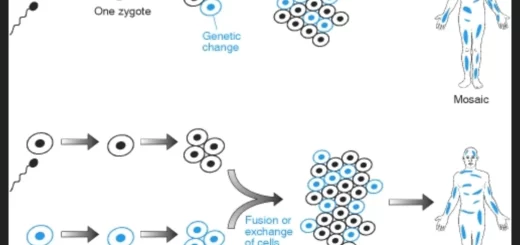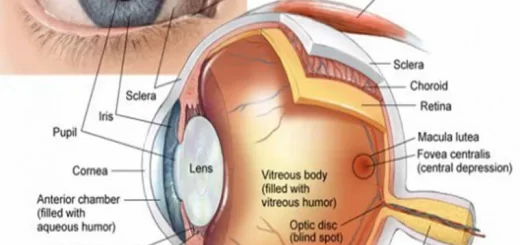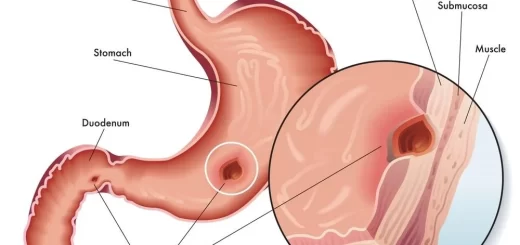Mediastinum contents, Aorta parts, Brachiocephalic trunk, Pulmonary trunk and Thoracic duct trunk
The mediastinum is the middle region in the thoracic cavity. It lies between the two lungs. By an imaginary line passing between the sternal angle anteriorly and the fourth thoracic vertebra posteriorly, the mediastinum is divided into Superior mediastinum (superior to this line), and Inferior mediastinum (inferior to this line).
The inferior mediastinum is subdivided into:
- Anterior mediastinum.
- Middle mediastinum.
- Posterior mediastinum.
Contents of superior mediastinum
- Arch of the aorta and its branches.
- Innominate veins.
- Superior vena cava and arch of azygos vein. Oesophagus.
- Trachea.
- Phernic nerves.
- Vagi.
- Thoracic duct.
- Left recurrent laryngeal nerve.
- Sympathetic trunk.
- Innominate and superior mediastinal lymph nodes.
Contents of anterior mediastinum
- Thymus gland.
- Lymph nodes.
- Two sterno-periccardial ligaments.
- Lymph nodes.
Contents of middle mediastinum:
- Heart and pericardium.
- Ascending aorta.
- Pulmonary trunk.
- Superior vena cava.
- Inferior vena cava.
- Pulmonary veins.
- Bifurcation of the trachea.
- Phrenic nerves.
Contents of posterior mediastinum
- Descending aorta.
- Oesophagus.
- Azygos system.
- Sympathetic trunk.
- Thoracic duct.
- Vagi.
- Posterior mediastinal lymph nodes.
The aorta is divided into three parts:
- Ascending aorta.
- Arch of Aorta.
- Descending aorta.
Ascending aorta
Origin: It arises from the left ventricle, at the level of 3rd left intercostal space. Termination: at the 2nd right costal cartilage. It has three sinuses:
- Anterior
- Left posterior
- Right posterior
Branches:
- Right coronary artery: arise from the anterior aortic sinus.
- Left coronary artery: arise from the left posterior aortic sinus.
Arch of the aorta:
- Begins: at the right border of the sternum, at the level of 2nd costal cartilage.
- Ends: at the left side of the lower border of the fourth thoracic vertebra.
- Course: it inclines from right to the left and from the front to the back. It rises to a height corresponding to the centre of manubrium sterni and lies in its entire course within the superior mediastinum.
Relations:
Anterior: From front to back:
- Left phrenic nerve.
- Trunk of left vagus. (As the left vagus crosses the arch, it gives off recurrent laryngeal nerve, which hooks round below the arch).
- Left superior intercostal vein.
Posterior:
- Trachea.
- Left recurrent laryngeal nerve.
- Oesophagus.
- Thoracis duct.
Superior: Branches of the arch from right to left, and from front to back:
- Brachiocephalic trunk.
- Left common carotid artery.
- Left subclavian artery.
These branches are crossed in front by: Left branchiocephalic vein.
Inferior:
- Bifurcation of pulmary trunk.
- Left main bronchus.
- Ligamentum arteriosum (on its left side) Left recurrent laryngeal nerve and on its right side superficial cardiac plexus).
Branches:
- Brachiocephalic trunk.
- Left common carotid artery.
- Left subclavian artery.
Applied anatomy: Ascending aorta is also a common site for aneurysm.
Descending aorta:
- Beginning: at the level of 4th thoracic vertebra.
- Termination: at the level of the twelfth thoracic vertebra.
Relation:
- Anterior: left main bronchus oesophagus and both crura of the diaphragm (mostly the right).
- Posterior: thoracic vertebrae and anterior longitudinal ligament.
- Right: thoracic duct and azygos vein.
- Left: left lung and pleura.
Branches
Parietal branches:
- Posterior intercostals arteries
- Subcostal artery
- Phrenic branches
Visceral branches:
- Pericardial branches
- Bronchial arteries
- Mediastinal branches
- Oesophageal
Brachiocephalic trunk (artery)
This is the largest branch of the arch aorta.
Origin:
- Arises from the convexity of the arch of the aorta posterior to the centre of the manubrium sterni.
- Passes obliquely upward, backward & to the right.
- Lies in front of the trachea, then on its right.
- At the level of the upper border of the right sternoclavicular joint, it divides into the right common carotid & right subclavian artery.
Branches: Only two terminal branches:
- Right common carotid artery.
- Right subclavian artery.
Pulmonary trunk
Origin: From infundibulum of right ventricle
Course:
- Directed superiorly and posteriorly.
- Divides into right and left pulmonary arteries.
It lies in the middle mediastinum. It is invested in a sheath of serous pericardium
Branches:
- Right pulmonary artery: is larger & longer than the left. It passes below the arch of the aorta. It is divided into 2 branches.
- Left pulmonary artery runs in front of the bronchus, It divides into 2 branches, and it is connected to the concavity of the aortic arch by the ligamentum arteriosum.
Innominate (brachiocephalic) veins
- Begining: begins behind the corresponding sternoclavicular join by the union of the internal jugular vein and subclavian vein on each side.
- Termination: The right and left innominate veins unite behind the lower border of the 1st costal cartilage to form the superior vena cava.
- Course/Length: Right innominate vein: Vertical, 1 inch. Left innominate vein: Oblique, 2, 5 inch.
The left innominate vein passes transversally from the left side crossing anterior to the branches of the arch of the aorta to reach the right side. It joins the right innominate vein from the superior vena cava.
Superior vena cava
- Beginning: it begins at the first costal cartilage, by the union of the two innominate veins.
- Course: it descends in the superior then in the middle mediastinum. The transverse sinus of the pericardium lies anterior to it.
- Termination: it enters the right atrium at the level of the third costal cartilage.
- Tributaries: Azygos vein joins the superior vena cava at the level of the second costal cartilage.
Inferior vena cava
- Beginning: it is formed by the union of the two common iliac veins at the level of the 5th lumbar vertebra and pierces the diaphragm at the level of the eighth thoracic vertebra.
- Termination: it ends in the right atrium.
Azygos vein
- The azygos system of veins drains blood from the back and from the thoracic & abdominal walls.
- This system includes the azygos, hemiazygos, and accessory hemiazygos veins.
- The azygos vein drains mainly blood from the right side.
Origin:
- Starts in the abdomen from the back of IVC.
- Enters the thorax through the aortic opening of the diaphragm (to the right of the aorta, with thoracic duct in-between).
- Ascends on the vertebral bodies in the posterior mediastinum.
- At the fourth thoracic vertebra, it arches forward over the root of the right lung.
- Ends in the superior vena cava at the level of the right second costal cartilage.
Tributaries:
- Right posterior intercostals veins (except 1st).
- Hemi-azygos & accessory Hemi-azygos.
- Oesophageal, mediastinal & pericardial veins.
Superior hemiazygos
- Beginning: At the level of T. 8 by the union of (4 – 8) posterior intercostal veins.
- Course: It lies on the left side of the vertebral column. At the level of T. 8, it curves behind the descending thoracic aorta to terminate in the azygos vein.
- Tributaries: From (4 – 8) posterior intercostal veins. Sometimes the left bronchial veins.
Inferior hemiazygos
- Beginning: As the azygos vein (but it arises from the left renal vein).
- Course: It reaches the thorax by piercing the left crus of the diaphragm. It ascends on the left side of the vertebral column till the level of T. 8. Then, it curves behind the descending thoracic aorta to terminate in the azygos vein.
- Tributaries: From (4 – 8) posterior intercostal veins. Sometimes the left bronchial veins.
Thoracic duct trunk
- It is the largest lymphatic vessel in the body (45 cm in length).
- It is thin-walled & contains many valves.
Course:
- It begins as a confluence of lymphatics called cisterna chyli at the level of T12.
- Leaves abdomen and enters thorax via an aortic opening between the abdominal aorta and azygos vein.
- Ascends in posterior mediastinum lying on thoracic vertebral bodies, to the right side of the esophagus till the lower border of the 5th thoracic vertebra where it curves obliquely upwards posterior to esophagus to reach its left side.
- It ascends up through the superior mediastinum and the thoracic inlet to the root of the neck.
- It then makes a loop at the level of the 7th cervical vertebra to end at the junction between the left internal jugular and left subclavian vein.
Tributaries:
It drains the whole body except the right side of the head and neck, right upper limb & right thorax (these parts are drained by the right lymphatic duct).
Histology of the heart, Cardiomyocytes types, Ultrastructure & features of cardiac muscle fibers
Fetal blood and circulation, Changes of fetal circulation after birth (in the newborn)
Heart & Pericardium structure, Abnormalities & Development of the heart
Heart function, structure, Valves, Borders, Chambers & Surfaces



